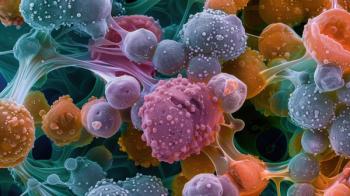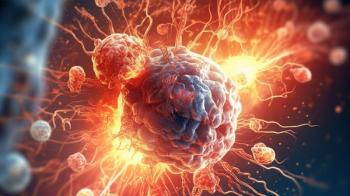
Managing Vasomotor Symptoms: Understanding the Menopause Transition and Treatment Options
Explore effective non-hormonal treatment options for menopause-related vasomotor symptoms, including hot flashes and night sweats, with insights from pharmacists.
This content was independently produced by Pharmacy Times in partnership with Bayer Healthcare.
At The Menopause Society (TMS) 2025 meeting in Orlando, Lee Shulman, MD, Professor of Obstetrics and Gynecology at Northwestern University, discusses how the menopause transition is a natural physiological process rather than a disease state. He explains that this transition involves significant hormonal changes from the reproductive to post-reproductive years—that can lead to vasomotor symptoms such as hot flashes, night sweats, and sleep disturbances. Shulman emphasizes that while hormonal therapies are effective for many women, not all are suitable candidates or wish to use them due to perceived or actual risks.
Pharmacy Times: Could you start by providing some background on why evaluating non-hormonal therapies for vasomotor symptoms and their impact on sleep is such an important area of research?
Lee Shulman, MD: It’s important to recognize that the menopause transition is not a disease state. It is a physiological transition from the reproductive years to the post-reproductive years, and that transition entails a considerable change in a woman’s hormonal physiology—going from a time when she is producing physiological levels of estrogen meant to facilitate ovulation and pregnancy to a time when she is no longer producing those same levels of hormones. This includes not only estrogen but also other hormones as well.
During this transition, the lower hormone levels and physiological changes lead to a variety of effects on a woman’s health and well-being. One of the most common is vasomotor instability, or hot flashes. These can be mild, moderate, or severe, with no clear rhyme or reason. Women experiencing vasomotor symptoms may face various disruptions in their daily lives, most notably sensations of intense heat, profuse sweating, and night sweats that cause significant sleep disruption. Sleep loss, in turn, increases the risk of other morbidities such as diabetes and cardiovascular disease.
Sleep is vital for both men and women, but vasomotor symptoms can profoundly disrupt it. Therefore, it’s essential to consider strategies to alleviate or eliminate these symptoms. Hormonal therapies are effective in reducing—and in some cases, eliminating—vasomotor symptoms. However, not all women can or wish to use hormones, due to perceived or actual risks.
The development of effective non-hormonal methods thus becomes an important tool for those in women’s health care who aim to help patients manage hot flashes and night sweats safely and effectively. This effort parallels the development of non-hormonal contraception—not implying superiority or inferiority to hormonal methods, but emphasizing that more options empower clinicians to tailor treatment to each patient’s needs and preferences. Pharmacy chooses not to be affected by hot flashes.
Newsletter
Stay informed on drug updates, treatment guidelines, and pharmacy practice trends—subscribe to Pharmacy Times for weekly clinical insights.


















































































































































































































